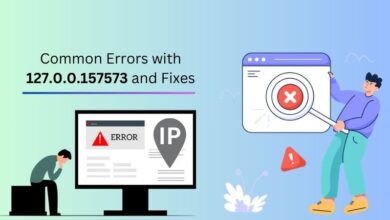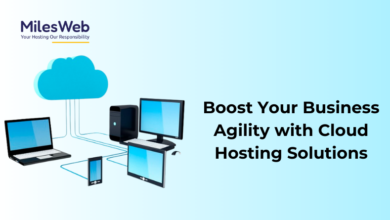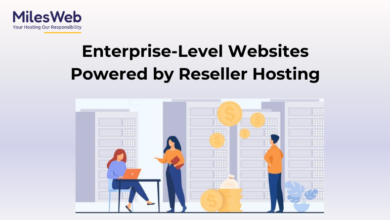Maximizing Cost Efficiency with NetSuite: Top Strategies for Managing Expenses and Enhancing Profitability

Cost management is crucial in determining a company’s success in today’s competitive business landscape. NetSuite, a powerful cloud-based ERP solution, offers robust tools and functionalities to help businesses optimize cost-related processes. This blog explores how NetSuite cost can be leveraged to maximize cost efficiency, reduce expenses, and enhance profitability.
Understanding Total Cost of Ownership (TCO) with NetSuite:
Total Cost of Ownership (TCO) is a financial concept that helps businesses assess the total cost of owning and operating a product or asset over its entire life cycle. It exceeds the initial purchase cost and includes various acquisition, operation, maintenance, and disposal expenses. TCO is a crucial metric for businesses as it provides a more comprehensive understanding of the overall costs involved in a product or project, helping them make informed decisions and evaluate the true profitability of their operations.
NetSuite is a cloud-based Enterprise Resource Planning (ERP) system that offers a Costed Bill of Materials (BOM) SuiteApp, which aids in calculating the comprehensive cost of assemblies. This SuiteApp is designed to help manufacturers and businesses gain deeper insights into the costs associated with their products and streamline the production process. Let’s explore how NetSuite cost calculation enables businesses to analyze component costs, estimate manufacturing item expenses, and access cost breakdowns for product engineering and costing processes:
- Comprehensive Cost Calculation: NetSuite’s Costed Bill of Materials SuiteApp considers all direct and indirect product manufacturing costs. It considers not only the material costs but also labor costs, overhead expenses, and other associated costs, providing a more accurate and holistic view of the total cost of the final product.
- Component Cost Analysis: The Costed BOM SuiteApp allows businesses to analyze individual component costs that go into the production of an assembly. This level of detail helps identify cost drivers, find opportunities for cost optimization, and make strategic sourcing decisions to lower overall expenses.
- Manufacturing Item Expense Estimation: By considering labor costs, machine costs, and other manufacturing expenses, NetSuite enables businesses to estimate the cost of manufacturing a specific item or product. This estimation helps set competitive prices and understand the profit margins associated with the manufactured items.
- Cost Breakdowns for Product Engineering: NetSuite provides cost breakdowns for product engineering, which assists businesses in understanding the cost impact of design changes or modifications. This feature facilitates cost control during product development and avoids costly surprises later in production.
- Costing Processes: With NetSuite, businesses can streamline their costing processes by automating calculations and integrating cost data across various departments. This leads to better team collaboration, reduces manual errors, and provides real-time visibility into cost-related information.
- Cost Tracking and Analysis: NetSuite allows businesses to track and analyze costs associated with production runs, job orders, or projects. This feature helps identify cost trends, monitor fluctuations, and improve cost forecasting accuracy.
- Real-Time Cost Visibility: One of the significant advantages of using NetSuite is the real-time visibility it offers into cost data. Businesses can access up-to-date cost information for different components and assemblies, making it easier to make timely decisions and respond to market changes effectively.
Enhancing Cost Visibility through Work Instructions & Traveler SuiteApp:
The Work Instructions & Traveler SuiteApp in NetSuite is a powerful tool that enhances cost visibility and aids shop floor personnel in day-to-day assembly operations. This SuiteApp offers several benefits that contribute to improved efficiency and cost management:
- Automated Traveler Report Generation: The SuiteApp automates the process of generating traveler reports for required work orders. Traveler reports provide comprehensive step-by-step instructions for shop floor personnel to follow during the assembly process. These reports contain details about the materials, tools, and processes needed to complete each work order, ensuring consistency and accuracy in production.
- Streamlined Assembly Operations: By providing clear and detailed work instructions in the traveler reports, the SuiteApp streamlines assembly operations. Shop floor personnel can access critical information directly from their mobile devices or printed reports, reducing the likelihood of errors and delays. This efficiency leads to smoother production processes and, in turn, better cost control.
- Cost Visibility through Filtering and Printing: The SuiteApp allows filtering and printing only the required work orders in the traveler report. This filtering functionality ensures that shop floor personnel receive precise instructions for their work orders. Employees can work more efficiently, optimize resource utilization, and minimize unnecessary expenses by focusing on the necessary tasks.
- Improved Cost Management: Cost visibility is crucial for effective cost management. The SuiteApp enables businesses to track costs associated with each work order by providing detailed information on materials and processes. This information is essential for monitoring expenses, identifying cost drivers, and making informed decisions to reduce production costs.
- CSV Import/Export of Instructions: SuiteApp supports importing and exporting work instructions in CSV format. This feature facilitates seamless integration with other systems and allows for bulk updates of work instructions. Importing cost-related instructions from external sources ensures the latest data is used, enabling accurate cost calculations and better overall cost management.
- Real-Time Updates: As SuiteApp operates within the cloud-based NetSuite ERP system, all work instructions and traveler reports updates are reflected in real-time. This real-time visibility ensures that shop floor personnel always have access to the latest information, reducing the risk of errors and minimizing production delays that could result in additional costs.
- Enhanced Collaboration: NetSuite cost monitor, the SuiteApp, fosters collaboration between different teams involved in the production process. Engineering, production, and cost management teams can access the same centralized system seamlessly. This collaboration leads to more accurate cost data, efficient decision-making, and cost-saving opportunities.
In conclusion, partnering with NetSuite offers businesses a comprehensive and scalable ERP solution that caters to their diverse needs. By teaming up with a reliable NetSuite partner, companies can ensure a smooth implementation and ongoing support, maximizing the benefits of this powerful platform. When considering NetSuite pricing and cost, it’s essential to recognize that while the investment may vary based on factors such as business size and modules required, the long-term advantages of improved efficiency, streamlined operations, and enhanced visibility into financial performance far outweigh the initial expenses. With NetSuite’s robust features and the expertise of a trusted NetSuite partner, organizations can confidently navigate the complexities of modern business and pave the way for sustained growth and success.



